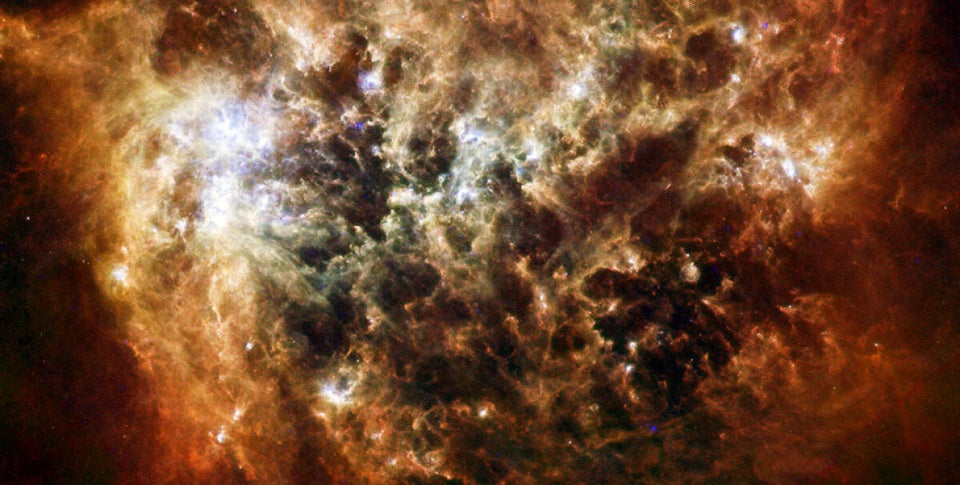Small stars may grow into giants by 'feeding' off a group of older stars, according to new research.
The theory may help to explain how stars up to 100 times as big as our Sun or more are able to form.
Some scientists' previous models seemed to indicate a built-in size limit for the formation of stars at about eight times the mass of our sun, even though much bigger stars are known to exist in deep space.
The new model proposes that the key may be older stars surrounding the younger sun, which feed it material and counteract the repellant radiation thrown off as it grows.
"This observation may lift the veil on the formation of the most massive stars, which remains, so far, poorly understood," said Alana Rivera-Ingraham, lead author of the study.
Stars form in clouds of gas in space, which gradually clump together until they are dense enough to combust and start a process of nuclear fusion.
As this process continues there are two main forces exerted by the star - its gravity draws in new material to burn, but the pressure given off by its explosive force repels some of the nearby gas.
It had been thought that at about eight times the mass of our sun, the star's radiation pressure would be too great to draw in new gas to increase its size even further.
But a group of stars surrounding an area in space known as Westerhout 3 seems to show an alternative model.

Above: Westerhout 3
Photographed by the Herschel Space Observatory, Westerhout 3 is a cloud of gas and dust about 6,500 light-years from Earth. It is surrounded by eight older stars, which appear to have pushed gas into a central reservoir. That gas eventually compresses and combusts into a new star which is fed with new gas by the older stars around it, and their repellant force means it is able to retain material to grow much larger than usual.
"The process is similar to the way a group of street cleaners armed with leaf blowers can stack leaves in a pile -- by pushing from all sides at the same time," said the University of Toronto, where Rivera-Ingraham completed the study.
The findings are preliminary and may only partly explain super-giant stars, but is an intriguing option in the search for new explanations.
